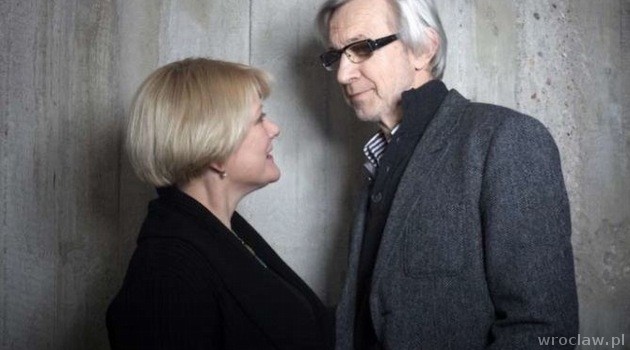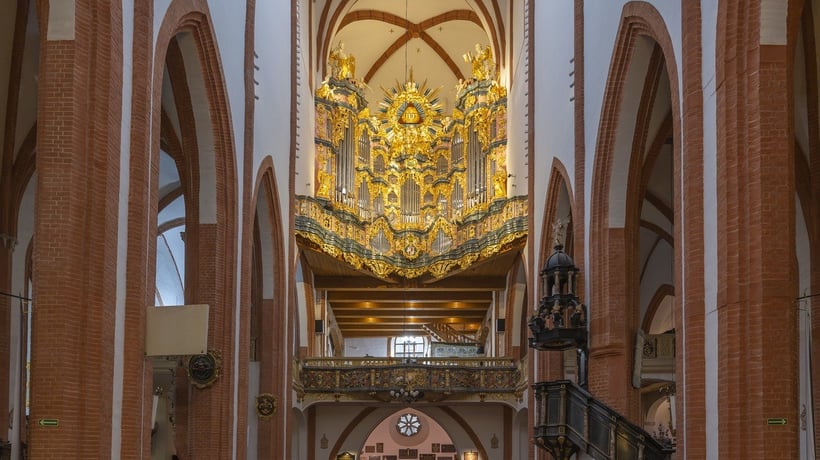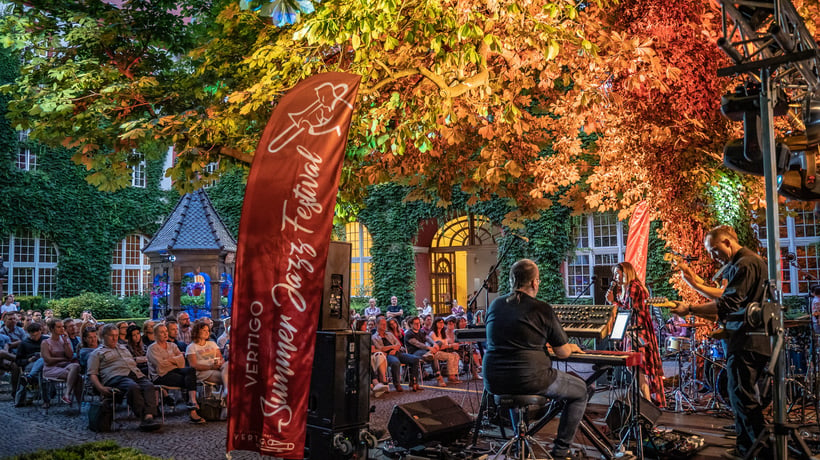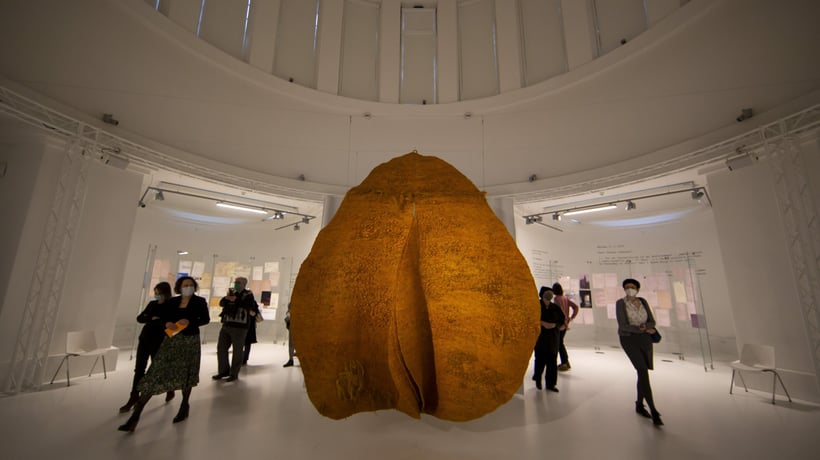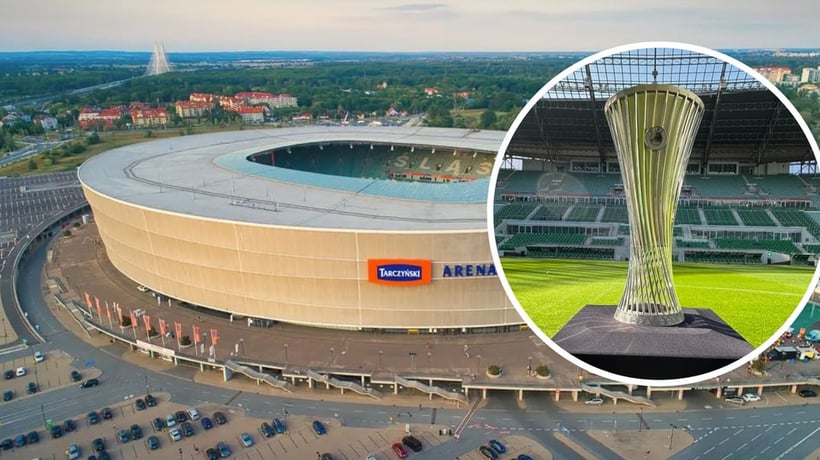In the beginning there was her first ever competition to design the Lower Silesian Operetta in 1975 (hers didn't win, but she met her husband Stefan Kuryłowicz), and exactly 30 years later the competition for the building of the National Forum of Music (this time a successful one).
In August Ewa Kuryłowicz, together with her colleagues leading the project (architects Dariusz Gryta and Piotr Marciniak), will have overseen the last works before the inaugural season of the NFM, and on September 19 she plans to celebrate the 25th anniversary of the company, together with the architects from her her team. They will listen to Gustav Mahler's Symphony of a Thousand in a building designed by the late Stefan Kuryłowicz and the whole team.
Magdalena Talik: Is NFM is the apple of your eye?
Professor Ewa Kuryłowicz: All projects are important to us, but this one is special in many respects, also because it is a public order. So far, we designed for science, sport, business, public transport, but not for art. Winning the competition 10 years ago was alone amazing and incomparable.
Wroclaw also played a role here, didn't it?
Definitely, because my husband and I always associated listening to music with Wroclaw, the city of fantastic festivals and unique churches filled with the sounds of music. As a high school student, I was a member of the Art Enthusiasts Club in Warsaw Zachęta, and we went to fantastic historic sightseeing tours. We also went to Wroclaw, Legnica and Świdnica. This is when I got to know Wroclaw: Gothic, Baroque, one of a kind.
When designing the NFM, did you draw your inspiration from some specific world concert halls?
We relied on my husband's knowledge. In the past, he won contests for the Baltic Opera, for the Cultural and Music Centre in Katowice, the Lower Silesian Operetta. He held a PhD in the subject of concert and theatre halls, he was really fascinated by this stuff. Before the implementation, we read much, we looked at examples, but there was no immediate inspiration. My notes and materials were certainly helpful, because while still a student, I spent one semester on a scholarship in the US in 1974 and saw rooms in the then newly built Orchestra Hall in Minneapolis, the Symphony Hall in Boston, the Roy Thomson Hall in Toronto, I also saw the Juillard School of Music New York and the Carnegie Hall. All these were excellent facilities, and served as examples in many textbooks of standard concert halls.
In the book "How Architecture Works. A Humanist's Toolbox', an excellent academic Witold Rybczynski suggests that the best concert halls were built in the nineteenth century.
The ones mentioned, like the Musikverein in Vienna, have specific parameters, they "play" beautifully. A concert hall is like an instrument that must resound. For that to happen, everything has meaning. The setting of chairs, the distance between them, the fabric, the finish. One goes down from the large-scale design to the detail. But the instrument, seemingly obvious, has a more complicated structure than we initially think. Are these nineteenth-century halls actually the best? Time will tell.

Building of the Polish Radio National Symphony Orchestra in Katowice
The building was inspired by the shape of an instrument
Rather, it concerns finishes - wooden elements made of multiple layers of a special, resin-glued veneer, golden metal details suggest materials from which musical instruments are built.
Upon entering, fans of music will see a large black wall of Corian, a plastic-like material that is deceptively similar to natural stone. Black walls, white balconies. Won't the effect be overwhelming?
No, this place was supposed to feel formal, and I think the proportions of the entrance hall went perfectly. We are not afraid of the black-and-white foyer, because it emphasizes the character of the building. When we dress up for special occasions, we too combine black with white. We wanted something sublime, which will reach everyone. However, we dropped all ornaments, because they wouldn't match the neo-modernist architecture, in the spirit of which this project - the National Forum of Music - was created.
This is something we can now boast: one of the largest concert halls in this part of Europe.
For now, the comparison can be made only with Elbphilharmonie in Hamburg, built at the same time. We have a similar hall capacity, although in Germany they have a 10 times larger budget for investments at their disposal. In turn, the NFM building is slightly larger than the Elbphilharmonie, as it is also the seat of the institution.

Szczecin Philharmonic on the cover of the magazine "Icon"
The NFM has also made an impression in Poland.
That's right, even despite launching several new facilities in recent years, such as the Podlasie Opera or the seat of Szczecin Philharmonic. The second of these projects is extremely successful. He was awarded the highly prestigious European award, Mies van der Rohe 2015. My husband was a member of the jury in the contest and really wanted this project to win, because it was visionary, unique. Let us not forget also the seat of the Polish Radio National Symphony Orchestra in Katowice. The hall is quite likeable. I know there was angst at the Katowice and Wroclaw hall being inaugurated at the same time. Now there is no such risk, and the NFM is the last building, for which one waits impatiently. For now, the construction of large cultural facilities is drawing to a close. Now it's time to use them!


